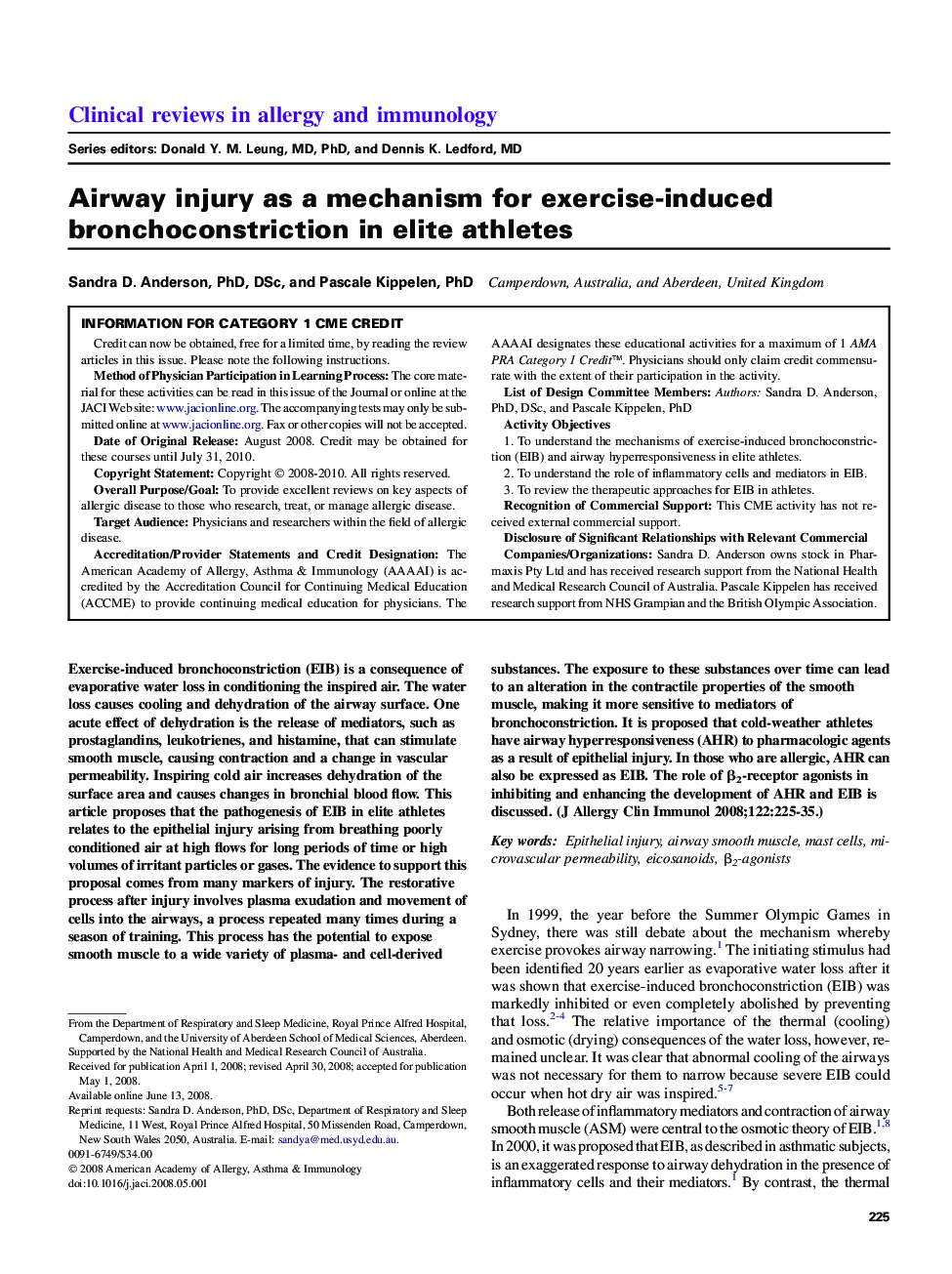| کد مقاله | کد نشریه | سال انتشار | مقاله انگلیسی | نسخه تمام متن |
|---|---|---|---|---|
| 3200514 | 1201937 | 2008 | 11 صفحه PDF | دانلود رایگان |

Exercise-induced bronchoconstriction (EIB) is a consequence of evaporative water loss in conditioning the inspired air. The water loss causes cooling and dehydration of the airway surface. One acute effect of dehydration is the release of mediators, such as prostaglandins, leukotrienes, and histamine, that can stimulate smooth muscle, causing contraction and a change in vascular permeability. Inspiring cold air increases dehydration of the surface area and causes changes in bronchial blood flow. This article proposes that the pathogenesis of EIB in elite athletes relates to the epithelial injury arising from breathing poorly conditioned air at high flows for long periods of time or high volumes of irritant particles or gases. The evidence to support this proposal comes from many markers of injury. The restorative process after injury involves plasma exudation and movement of cells into the airways, a process repeated many times during a season of training. This process has the potential to expose smooth muscle to a wide variety of plasma- and cell-derived substances. The exposure to these substances over time can lead to an alteration in the contractile properties of the smooth muscle, making it more sensitive to mediators of bronchoconstriction. It is proposed that cold-weather athletes have airway hyperresponsiveness (AHR) to pharmacologic agents as a result of epithelial injury. In those who are allergic, AHR can also be expressed as EIB. The role of β2-receptor agonists in inhibiting and enhancing the development of AHR and EIB is discussed.
Journal: Journal of Allergy and Clinical Immunology - Volume 122, Issue 2, August 2008, Pages 225–235